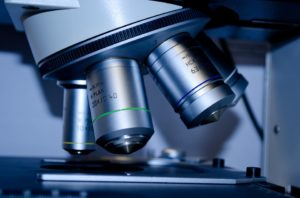
As one of the wonders of the molecular world, the enzyme ATP synthase is responsible for the energy storage in most life forms. In the past, its own mechanisms surprised scientists when it was discovered that it functions like a machine; working in a ‘dual motor’ system and producing adenosine triphosphate (ATP) as a result.
ATP is used within cells as a coenzyme, and is said to be ‘the energy currency of life’. It plays a key role in the conversion of mitochondrial energy in mammals. As a chemical energy storing nucleotide, it releases its energy once broken down into Adenosine Diphosphate (ADP). This organic compound (ADP) influences the flow of energy across cells, and plays a key role in metabolism.
In a study recently published in BMC Cell Biology, led by Eric Sawyer, Elizabeth Brunner, and Karen Hales at Davidson College (NC, USA), new insights are presented for the role of ATP synthase in the fruit fly Drosophila.
In scientific research, this genus has established itself as a reliable model to observe such processes. While analysing the testis of this species, it was found that the various subunits of ATP synthase contribute to the shaping of the Nebenkern – a mitochondrial formation within insect sperm. This structure resembles an onion-like form, due to mitochondria interlocking together after cell division has occurred. This spherical form has a complicated morphology made up of two masses that densely pack together as a result of mitochondrial fusion. Following this process, the two components of this structure re-organise, when they are unravelled and elongated.

The molecular mechanisms underlying these curious mitochondrial processes has been an area of growing research, as previously studied in a range of systems from yeast to neurons.
In this newly presented study, researchers are observing the process of spermatozoa production following cell division (spermatogenesis) in the Drosophila species. This can act as a useful analogue, potentially helping us understand the molecular processes in other related systems.
In addition to understanding its role across biological systems, comprehending the processes of ATP synthase is of direct importance to humans, as any defects in its processes can contribute to the development of neuromuscular disorders and various diseases (as the authors indicate).
This recent article in BMC Cell Biology presents the first piece of evidence which links tissue-specific ATP synthase subunits with tissue-specific mitochondrial shaping processes. These findings demonstrate the impact of cell processes on tissue morphogenesis, and contribute to the on-going research of ATP synthase’s influence on membrane conformation.
Comments